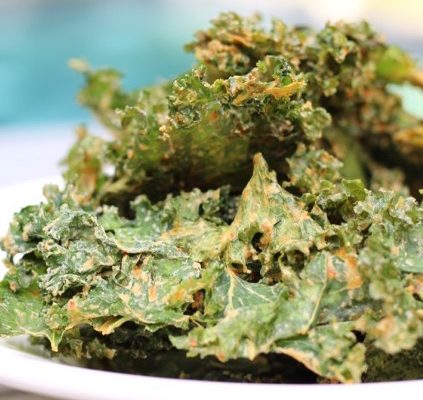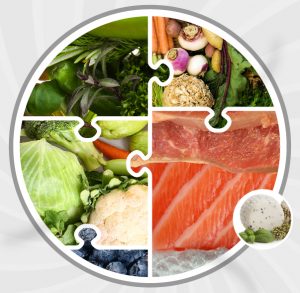We are all familiar with the fact that when the temperature drops, the chance of us coming down with a cold or the flu increases significantly. That’s because we’re likely to be inside and studies have shown that the flu survives and spreads better when the air is dry than when it is more humid. And, when you spend more time indoors, you’re exposed to more germs.

The flu virus is also transmitted much faster when it’s cold because the fatty coating of the virus that hardens and protects it becomes more resilient the colder it gets. In warmer temperatures this protective coating melts, and unless it is inside a living person or animal, the virus perishes.
Did you know: when your core internal temperature falls after exposure to cold, the immune system’s ability to battle the rhinovirus (the virus that causes it) is also reduced. The immune system literally slows down.
Interestingly, cold feet may also play a part. In a recent study, researchers made students sit with their feet in cold water for 20 minutes. These students were found to be statistically much more likely to catch a cold in the next five days than the control group (those who didn’t have to sit with their feet in cold water).
TOP 7 WAYS TO BEAT THE FLU
Fewer colds and sick days this winter would be good, right? Here are my top seven tips to keep you fighting fit this month – and beyond. I print out this list and stick it on the fridge as a reminder to me (and my family) that prevention is better than cure
1. WATCH YOUR SUGAR INTAKE
Why? Recent studies suggest that the immune system stays depressed for hours after consuming sugar. That’s because sugar fans the flames of inflammation and affects the ability of white blood cells to fend off viruses and bacteria.
Enjoy raw cocoa, Sweet Freedom Choc Shots or cacao hot chocolate on chilly days, adding your favourite milk or milk substitutes (with a little xylitol or stevia to sweeten, if you like). A few squares of pure, dark chocolate will also satisfy – Green & Blacks, or any good chocolate with a higher cocoa content (at least 75%), is ideal.
2. SUPPORT YOUR TUMMY
Did you know that up to 80% of our immunity to germs and disease is in the gut? The mucosa-associated lymphoid tissue (MALT) in the gut is part of the first line of immune defence, so getting the right balance between beneficial, or ‘good’ gut bacteria, and the ‘bad’, or potentially unfriendly bacteria, is key.
How to do this:
The gut environment takes a beating year after year, owing to poor diets, too much sugar, stress, antibiotics and other factors. Even if you have no obvious tummy troubles, digestive health is vital, so it’s worth the extra effort to take care of it.
Add probiotic and prebiotic foods to your diet, as these re-populate the gut with good bacteria and feed them well enough to crowd out bad bacteria.
Here are some gut-friendly choices to get you started:
- Organic, probiotic, natural yoghurt (such as Yeo Valley or Rachel’s)
- Choose full-fat, as the 0% or no-fat options have increased levels of milk sugars – and fat isn’t the enemy, either in life or in weight loss
- Miso soup or miso bouillon paste (add these to soups and stews)
- Oats (soak first, as you would to make overnight oats, in order to release the goodness)
- Onions, garlic and Jerusalem artichokes
- Bananas
- Beans
3. SERVE CHICKEN SOUP
Did you hear that chicken soup is great when you’re unwell? If you thought it was just an old wives’ tale, you’d be wrong. Research suggests that a bowl of chicken and vegetable soup can slow the speed at which neutrophils move around your body. Neutrophils are a type of white blood cell and part of the immune system, protecting your body from infection. When the neutrophils move slowly, there’s a greater chance of them becoming more concentrated in the areas of your body that need the most healing. Studies have shown chicken soup to be particularly helpful in reducing symptoms in upper respiratory system infections like the common cold.
4. DRINK MORE WATER AND IMMUNE-BOOSTING TEAS
Water is a miracle worker. It flushes germs from your system, helps your blood to carry plenty of oxygen to your body’s cells and allows those cells to absorb important nutrients.
Invest in a filter jug or bottle to avoid quaffing high levels of chlorine and fluorine along with your tap water.
Green tea and chamomile tea are also immune system strengtheners. Chamomile promotes the production of white blood cells (macrophages and B-lymphocytes) which are the biggest infection-fighters of your immune system. Green tea, and Japanese macha in particular, is rich in polyphenols, specifically a group of natural chemicals called catechins. The catechins in green tea (the most powerful of which is epigallocatechin, or EGCG for short) have been found to be at least 25 times more potent than vitamins C and E.
5. TAKE TARGETED SUPPLEMENTS
Top of the list for immunity are a good probiotic, a multivitamin and extra vitamin C and zinc.
For most people, a daily probiotic will help maintain the right balance of bacteria in the gut. If you have ongoing tummy troubles like IBS or constipation, we should talk – you will need something for your specific symptoms.
A multivitamin bridges the gap between what you are eating and what you should be eating, and takes care of any major deficiencies.
Go large when it comes to vitamin C, both in food and supplement form. Broccoli and red peppers contain more C than oranges (contrary to popular belief) and there are loads of other foodie options, too: kale, cauliflower, parsley, spinach, strawberries, Brussels sprouts, blackcurrants, kiwi fruit, pineapple, mango, papaya and citrus fruits.
Top up zinc levels by eating more palm-sized pieces of lean meat (especially lamb, beef, venison and turkey), pumpkin seeds, ginger root, green veggies, oats, nuts, sesame seeds, yoghurt and scallops.
6. COOK WITH IMMUNE-BOOSTING INGREDIENTS
Adding flavour to food is a smart way to include delicious immune boosters on your plate.
Garlic is a potent superfood. It is antimicrobial, thanks to the active ingredient allicin, which helps fight viruses, and has been used for thousands of years to boost the immune system and prevent sickness.
Most culinary herbs contain anti-inflammatory properties due to their phytonutrients, but oregano and thyme are particularly rich. Spice up your cooking with turmeric and ginger, too, as these are well-documented immune boosters.
7. SOOTHE SORE THROATS
There are a variety of different natural ingredients that are backed by research pointing to their usefulness.
Fresh ginger added to boiling water may help sooth a sore throat or cough. Honey (look for raw honey or Manuka rather than the common-or-garden variety) is often teamed with lemon for a soothing drink for sore throats and may also act as cough suppressant. Raw honey should not be given to children younger than one as it may contain botulinum spores.
Sore throats may additionally benefit from gargling with salt water, while saline (salt water) nose drops help clear mucous from blocked nasal passages and soothes tender skin inside the nostrils.
PS If you’re the kind of person who ALWAYS has a cold or gets things worse than everyone else, would you like to try to fix that? Maybe you have other health issues or niggly symptoms you know you need to work on. You’d be amazed how you can improve your health by following a good eating plan. You know where I am… and you can book a free call HERE.





